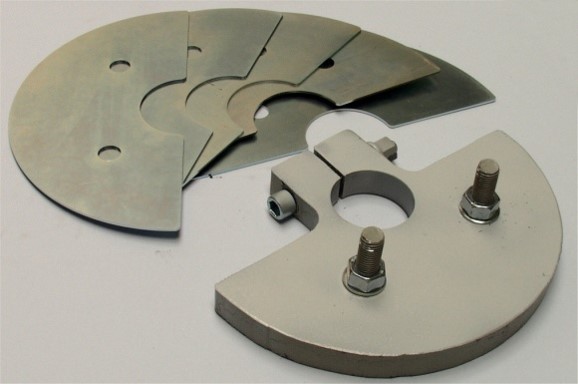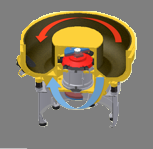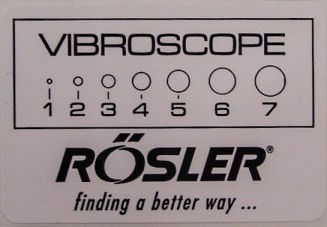
Mass Finishing Machine Settings Series, Part 2 – Determine Imbalance Weight Settings for Consistent Results
, roslerusa - Zurück zur Übersicht
Specific mass finishing applications are developed through processing trials. Once defined, users should not deviate from the determined machine settings unless necessitated by work piece or process changes.
Rosler partners with clients to provide testing in our global Customer Experience Centers to demonstrate our capabilities on a specific work piece and to calibrate machine settings. Determining the exact machine settings requires considering and testing multiple factors.
Vibratory Systems
The most common drive systems in mass finishing are vibratory. This refers to actual finishing machines such as rotary, tub, and linear continuous flow vibrators as well as auxiliary equipment like screening systems, vibratory conveyors, buffers, etc.
In all of these cases, the speed of the vibratory motor or the electric motor driving the imbalance unit(s) may have to be adjusted as well as the setting of the imbalance weights.
Vibratory weight plates
The angle between the upper and lower imbalance weights determines the movement of the media and work piece mix within the machine.
The number (mass) of imbalance weights determines the processing intensity (amplitude). More weights produce higher intensity while fewer weights deliver lower intensity.
Vibratory motor diagram
Setting Imbalance Weights
The movement of the media/work piece mix is always opposite to the motor direction. Typically, the motor runs clockwise and the media/work piece mix runs counter clockwise.
In some instances, the motor can run clockwise and counterclockwise including the Rosler “R” machines and gate clearing in Rosler “Euro” machines.
Half-circle metal plate weights on the top and bottom of the motor must be positioned with respect to each other. For a basic setting, the bottom weight plate must be turned 90 degrees forward of the top weight plate, in a basic setting.
Imbalance weights locations and settings within a vibratory motor
When setting imbalance weights, it is important to understand the impact of changes. For example, increasing the lead angle will make the media/work piece mix travel around the work bowl faster. Decreasing the lead angle will have the opposite effect, slowing movement.
Typical lead angles range from 70 to 120° and can be observed by checking the gauge on the top of the motor shaft.
Vibratory motor lead angle gauge
Within the imbalance weights, the top weight controls the travel speed of the media/work piece mix around the work bowl. Adding additional weights to the top will increase the travel speed while decreasing the spiral speed in the work bowl.
The top imbalance weight controls media and workpiece speed around the work bowl as represented by the red arrow while the bottom imbalance weight controls the spiraling speed of the work bowl contents.
The bottom weight controls the spiral speed of the media/work piece mix in the work bowl. Conversely to the top weight, adding additional weights to the bottom will increase the spiral speed but also decrease the travel speed around the work bowl.
Action Points
Regularly checking a mass finishing machine’s settings including motor speed(s), setting of imbalance weights, work station angles, etc. to ensure they are as initially established will produce better results and protect the systems ROI.
A vibrocope sticker on the work bowl allows for a quick check of the processing intensity. Additional information can be found in our Using Vibrascope to Measure Amplitude v. Frequency in Vibratory Bowls blog post.
Virboscope sticker
Additionally, if repairs require drive motors to be disconnected, make sure that they are rewired correctly and are not running in the wrong direction.
If the machine settings must be changed, carefully follow the instructions in your operator’s manual or consult the manufacturer for assistance.
If not already integrated, installation of a frequency inverter for precise setting of the drive speed of your machine may be available as an upgrade, providing additional control and oversight.
The Rosler Way
Rosler goes beyond developing mass finishing machines to provide operational insight and guidance for the lifetime of our machines as well as consumables and service. Contact us to discuss your needs and our capabilities.
The Mass Finishing Machine Settings Series also includes Part 1 – Improve Machine Function with Proactive and Responsive Observation, Calibration.





